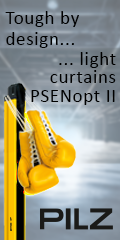
Posted to News on 21st May 2025, 12:00
Robotics without the headaches: from programming to strategic advantage
The pressure on machine builders is mounting: shorter lead times, a shortage of technical personnel, and rising expectations around flexibility and data integration. In this context, Lenze aims to be more than a provider of automation technology.

With a combination of ready-to-use software modules, digital twins, open-source technology, and targeted training programs, the company brings the promise of 'Robotics as a Service' to life. It's all about working smarter with less.
The reality of software engineering
The challenges engineers face are real and pressing. There's a growing shortage of qualified profiles, deadlines are getting tighter, and the increasing technological complexity demands flexible, adaptable solutions. The risk of missed deliveries or excessive development costs is high. That's exactly where Lenze FAST provides a solution.
Lenze FAST includes a toolbox - built according to the IEC61131 standard - which serves as a powerful toolkit for logic and motion programming. The FAST Framework supports application development, enabling engineers to build their machine software modularly, integrate applications, and implement them faster.
But Lenze goes beyond just logic and motion programming. The German automation specialist also provides solutions for digitalisation by processing data from PLCs and actuators. Think machine and line OEE (Overall Equipment Effectiveness) and production logging. Additionally, Lenze FAST includes a data logging app that displays every data point from the PLC and actuators on a dashboard with a trend widget. These dashboards are easily accessible through web technology.
From programming to parameterising
What sets the FAST Toolbox apart is its focus on modularisation and standardisation. Technology modules like 'Pick and Place', 'Flying Saw', 'Magic Track', or 'Basic Motion' allow complex functions to be added to an application with just a few clicks. For robotic applications, this means that functions such as gripper control, three-dimensional movements, and load balancing no longer need to be programmed but configured.
The robot template within FAST takes it even further. "For 80% of applications, it's just a matter of setting parameters," says Jeroen de Hond, robotics specialist at Lenze. "Where programming used to take weeks, now half a day is enough. That makes a world of difference."
Digital Twin as an accelerator
Another asset is the digital twin technology that Lenze uses for simulation, sales, training, and virtual commissioning. By testing the functionality of the robot application before physically building the machine, companies avoid errors, accelerate market introduction, and improve the reliability of their solution.
This virtual pre-commissioning is fully integrated into the FAST template, including visualisation. Along with the open programming environment via CodeSys, this gives companies not only speed but also control and adaptability.
Impactful workshops
To guide companies in this new automation model, Lenze offers targeted workshops. During these sessions - grouped under the term 'Robotics as a Service' - participants learn to practically use the FAST tools and apply them to their own case.
Marc Vissers, Marketing and Communication Manager EMEA West, emphasises the importance of this support: "Every company is different. Our approach always starts with their specific situation and goals. From there, we provide customised training and advice, with attention to topics such as modular automation, data analysis and servitisation."
Flexibility and future-proofing
With FAST, Lenze not only helps optimise engineering processes but also supports the development of new business models. By using data smartly, companies can fine-tune their machines more efficiently and set up new revenue models like pay-per-use. The Nupano architecture - an open and user-friendly platform - allows integration of proprietary or third-party apps and keeps them up to date across the lifecycle.
Finally, Lenze continues to invest in integration capabilities. Today, robots from manufacturers such as KUKA can also be seamlessly integrated into existing production environments via the FAST template. This makes the platform ready for the next step in smart automation.
Want the latest machine building news straight to your inbox? Become a MachineBuilding member for free today >>















